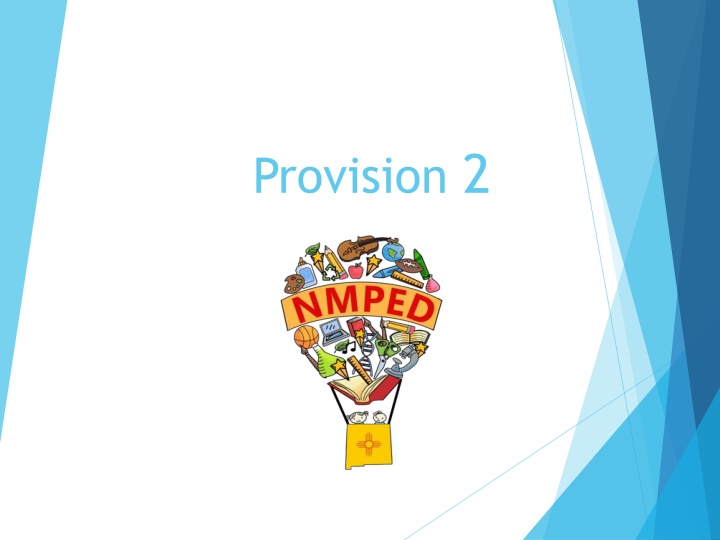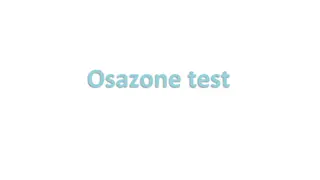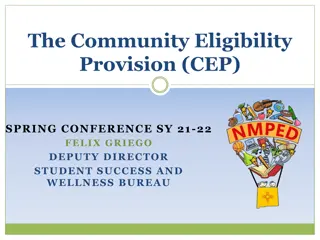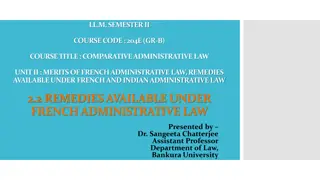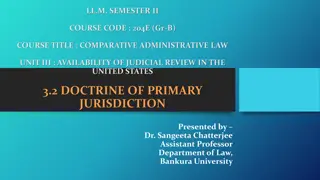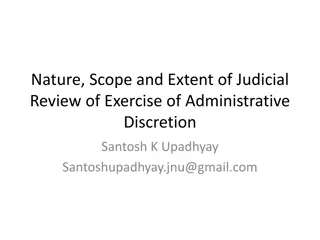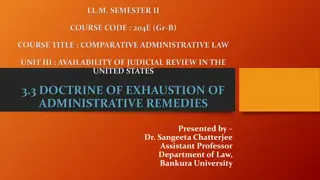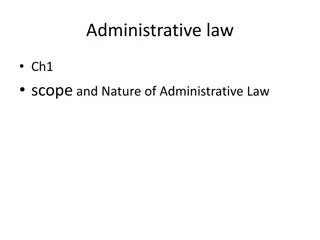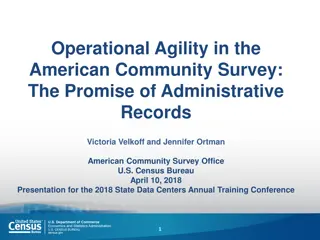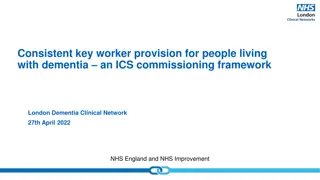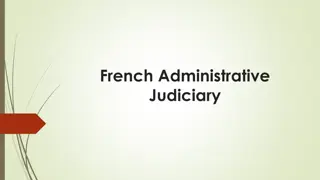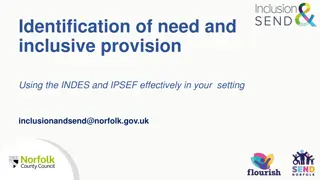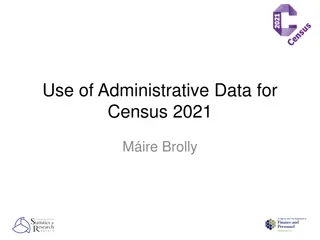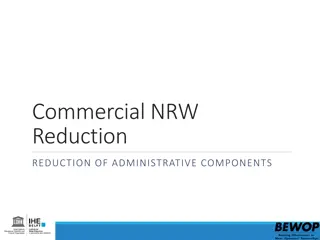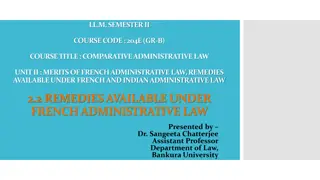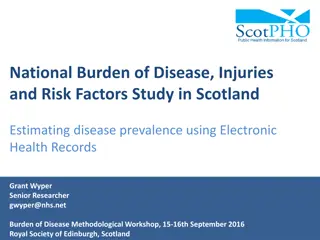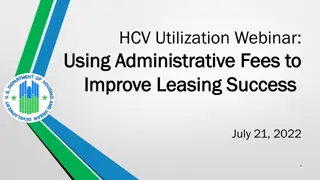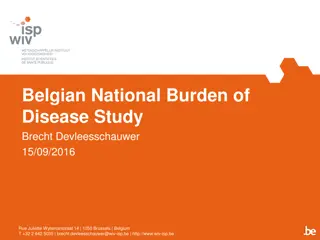Provision 2 Overview: Reducing Administrative Burden
Provision 2 offers a solution to reduce paperwork and administrative burdens for schools participating in the National School Lunch Program. Schools providing free meals for four years can simplify processes and increase student participation, while minimizing stigma and paperwork. Considerations for feasibility include current participation rates, cost effectiveness, and operational efficiency.
Download Presentation

Please find below an Image/Link to download the presentation.
The content on the website is provided AS IS for your information and personal use only. It may not be sold, licensed, or shared on other websites without obtaining consent from the author.If you encounter any issues during the download, it is possible that the publisher has removed the file from their server.
You are allowed to download the files provided on this website for personal or commercial use, subject to the condition that they are used lawfully. All files are the property of their respective owners.
The content on the website is provided AS IS for your information and personal use only. It may not be sold, licensed, or shared on other websites without obtaining consent from the author.
E N D
Presentation Transcript
Overview Congress incorporated into Section 11(a)(1) of the Richard B. Russell National School Lunch Act (42 USC 1759a) three alternative Provisions. Provisions help reduce paperwork and administrative burden Federal Regulations found in 7 CFR 245 Provision 2 Guidance on http://fns.usda.gov
Provision 2 Overview Meals provided to ALL students at no charge for 4 consecutive years (including base year) No maximum or minimum requirement for the percentage of free and reduced eligible Only take applications in the base-year (1styear) Schools must make up the difference between Federal reimbursement and costs using non-Federal funds.
Provision 2 Overview Schools must first receive LEA and State agency approval before starting Provision 2 Schools exhibit reasonable accuracy in determining the eligibility status of students Accurately counts meals, by type, at POS Accurately report/claim meals for reimbursement Schools may return to standard meal counting procedures at any time with State Agency approval and amend agreement with State agency 4-year extensions may be granted with approved socioeconomic data
Reduce Administrative Burden Reduce administrative burden for SFAs No applications, determination, verifications after the base year No cashiers though reimbursable meal counts are still required Reduce paperwork for families Reduces perception of stigma for students receiving free and reduced- price meals Increases participation.
Feasibility Is Provision 2 a Good Fit? Provision 2 can be a great alternative to an entire school district or a single school within a district. Factors to consider in the evaluation process: Current participation & Potential for increased participation Percent distribution of free and reduced-price eligible students Cost effectiveness of the operation & cost reduction of administrative burdens Possible quicker lines, less stigma for F&RP students, philosophy of administration
Feasibility Is Provision 2 a Good Fit? Financial Feasibility: Since Provision 2 is non-pricing, how much revenue will be gained from increased participation? How much revenue will be lost from loss of paid-meals and reduced-price co-payments? What will be the cost if paid or reduced-price participation increases? Can labor be decreased or diverted to other duties? Labor may be decreased in processing eligibility applications and conducting verification, count meals by eligibility category, collect money for paid and reduced-price meals, etc.,
Feasibility Is Provision 2 a Good Fit? For which schools and which programs will Provision 2 work best? SFA-wide for breakfast and lunch SFA-wide for only lunch or only breakfast In selected schools for breakfast and lunch In selected schools for breakfast OR lunch only
The Base Year Base-year is the 1st of 4 years on Provision 2 All standard meal application procedures are followed Media release & Letter to household required (indicating all students will eat free but the need for applications to be returned) Applications collected and eligibility determinations made (including direct certification) Notifications sent to family Verification is conducted, summary report still required Counting and claiming meals by eligibility type at POS But all students eat for free!
Base Year Claiming Percentages Percentages of free, reduced- price, and paid meals served during the base year are calculated at the end of the year to claim meals in non- base years Claiming percentages represent the ratio of each meal category (free, reduced price, or paid) to the total reimbursable lunches and/or breakfasts served Claiming percentages can be calculated for each Provision 2 school, a group of Provision 2 schools, or SFA-wide (2004 USDA Memo) Lunch percentages are calculated separately from breakfast percentages and applied separately in non-base years
Base Year Claiming Percentages Monthly claiming percentages in the base year may be applied to corresponding months in non-base years E.g., The base-year s January percentages of Free, Reduced, Paid students would be applied to January of non-base year claims Each month of the base-year will have a different F&RP claiming percentage Annual base-year claiming percentages can be applied to each month of non-base years Annual percentages are calculated using total lunches by each category; it is not an average of monthly percentages Carry the calculation to a minimum of two decimal places before rounding (e.g., 86.15%). Then round the percentages to one decimal place using standard rounding; (e.g., 86.15% = 86.2%)
Non-Base Years Non-base years are Years 2, 3, and 4 of the 4 Years cycle (and all consecutive extensions) Public release is still required, but simplified version is acceptable Site monitoring remains in effect October reporting remains (with adjustments) Schools do not distribute/collect applications or conduct direct certifications or verifications Except if the school chooses to do so in Year 4 for the purpose of an extension No applications for new students Exceptions for schools that only operate Provision 2 for lunch or breakfast but not both
Non-Base Years Meal Counts Take total daily reimbursable meal counts (not by F&RP) at POS Add total daily meal counts at end of claiming period to determine total meals for claiming Multiply total meal count by the free, reduced-price, and paid percentages computed during the same month of the base year (or use annual percentages) Submit meal counts by category after percentages applied
Non-Base Years Meal Counts Example: Base Year (2012) Free, Reduced, Paid Annual Percentages: Free = 70.3%, Reduced = 20.8%, Paid = 8.9% Non-base Year (2013) claim month of November Total meal counts for Nov-2013 claim period = 2,000 Free meal count = 2,000 * 0.703 = 1406 Reduced-Price count = 2,000 * .208 = 416 Paid meal count = 2,000 * .089 = 178 Edit check: 1406 + 416 + 178 = 2000
Claims Review Process Conduct daily meal count edit checks using total enrollment (do not use free, reduced-price and paid eligible) First, determine the total number of students with access to the lunch program, as of the last serving day in October. You may also use the highest number of students enrolled during the month for internal control purposes Apply an attendance factor to enrollment to determine the average daily attendance for your Provision 2 school Each day's total student meal count is compared to the attendance-adjusted enrollment If the comparison shows more total meals claimed than attendance-adjusted enrollment, you need to follow-up to determine the cause prior to submitting the Claim for Reimbursement to your State agency
Changes that Arise When the attendance area for a Provision 2 school changes the school must reestablish their base-year Adding new standard school with changing attendance area Splitting one school to two schools with boundary changes If two Provision 2 schools merge but there is no change in total attendance area then a sum total base year count by category can be used to determine claiming percentages SFA-wide or grouped percentages have exemptions See USDA Provision 2 Guidance Manual Questions and Answers
End of Provision 2 Cycle: Revert back to standard meal claiming Apply for an extension Schools will continue to use base-year claiming percentages Extensions are granted for a 4-year cycle for School will Continue using their base year percentages Apply for a new base year Regular Streamlined (New applications required in both cases)
Applying for an Extension Establish the school s income level, adjusted for inflation, has remained stable, declined, or had negligible improvement Negligible improvement 5% or less Use pre-approved site-specific equivalent socioeconomic data from base year and last year of current cycle (see extension request). Source of data must remain consistent between base-year and last year before extension See USDA Provision 2 Guidance for example to calculate percentage change.
Socioeconomic Data Socioeconomic data is the approved source you identified to the State agency on the Free and Reduced Price Policy Statement during the most recent base year The socioeconomic data used must be equivalent for the most recent base year and the last year, or the year you are requesting the extension, of your current Provision 2 cycle Data should be reflective of the school s population It should effectively measure whether the income level of the school s population (adjusted for inflation) has remained stable, declined or had only negligible improvement. Provided that the above criteria are met, pre-approved sources of socioeconomic data include: City or county zoning and economic planning office data; Approved unemployment data; Local SNAP or TANF certification data including direct certification; Food Distribution Program on Indian Reservations data;
Record Retention Must maintain base year applications/records through entire Provision 2 cycle (and all extensions) plus 3 years Base year records include: All approved and denied free and reduced price applications; Direct certification data; Changes in eligibility status as a result of verification and other reasons; Daily meal counts, by type & Calculation of claiming percentages; Attendance areas of each school participating in Provision 2; Socioeconomic data that will be used as the base year data if an extension is granted; Any extension authorizations from the State agency; Edit check and on-site review documentation; Verification records; and Claims for Reimbursement Retain records longer if school has audit findings and until audit findings are resolved
Keep Your Records Rosters must be kept by month by school Maintain base year socioeconomic data used to request extensions throughout the Provision cycle(s) (maintain same base year even with multiple extensions) Must retain approved Agreement and Policy Statement with the State Agency If the State agency determines the school has not maintained the required base year records the State agency would require the school to return to standard application and meal counting procedures or reestablish a base-year
